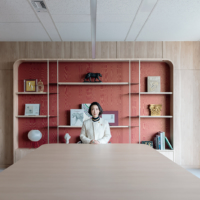A controversial plan to build a high-level nuclear waste storage facility in Horonobe, Hokkaido, has been withdrawn, the Science and Technology Agency made clear Friday.
During a regular news conference, agency chief Sadakazu Tanigaki said he made a "grave decision" when the agency informed Hokkaido Gov. Tatsuya Hori of its alternative plan Thursday to build a research-only facility to study the feasibility of underground disposal of high-level nuclear waste.
Tanigaki expressed hope that the governor will accept the revised plan. Hokkaido officials said Thursday they would examine the proposal to confirm whether the central government's earlier plan to bring nuclear waste to Horonobe has been scrapped. Hori is expected to make a final decision after assessing the reactions of the Hokkaido assembly.
In 1984, Horonobe, a town with a population of about 3,000 in northern Hokkaido, invited construction of the facility in a bid to stimulate the local economy and halt depopulation. But the plan was later stalled by opposition from the prefectural government and nearby municipalities.
The original plan called for construction of what was to be called the Storage Engineering Center, run by the governmental Power Reactor and Nuclear Fuel Development Corp. The center was to conduct research into the underground disposal of nuclear waste produced when spent fuels are reprocessed. The complex was also to include a facility where vitrified high-level waste would be stored for 30 to 50 years while cooling.
Such vitrified waste is currently stored at a facility in Rokkasho, Aomori Prefecture, on a temporary basis.

















With your current subscription plan you can comment on stories. However, before writing your first comment, please create a display name in the Profile section of your subscriber account page.